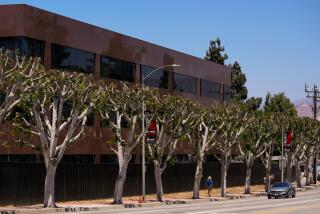Q: As new owners of property...
Q: As new owners of property on which there are nut and fruit trees, we are concerned that we prune them properly . Are there some general rules to follow?--V.L., Tarzana A: Most experts agree that annual pruning is the key to vigor and prolificacy for most fruit- and nut-bearing trees. Some pruning every winter allows light to reach the inside of the tree canopy; that helps develop renewal wood, which replaces older, less productive branches. Once production is lost from the interior wood of a tree, no amount of catch-up trimming can restore it. How much is trimmed each year varies according to species. Peach fruiting wood, for instance, must be replaced with new shoots annually, so after a twig has borne fruit, it should be thinned out. Apricot wood, on the other hand, bears for three or four years before thinning is needed. All trees should be “topped” (kept relatively low) to make fruit harvesting easier. Two good books on the subject are: Sunset’s “How to Grow Fruits, Nuts & Berries,” Lane Publishing Co., Menlo Park, and “All About Pruning,” Ortho Books, San Francisco.
Q: My husband and I seem to have been battling crabgrass in our lawn at the wrong time of year -- in the summer, not in winter.--T.L., Glendora A: I believe you are referring to the current practice of applying a pre-emergent herbicide--such as Balan, Diphenamid, Tupersan, Dacthal, Betasan or Devrinal--during the late winter and early spring. If pre-emergent materials are present in the soil when crabgrass seeds start to germinate, most will not develop the first leaves. Read the manufacturer’s label directions: Some of these herbicides should be applied to established turf grass only, and many carry cautions about reseeding before a specified post-application period is up.




